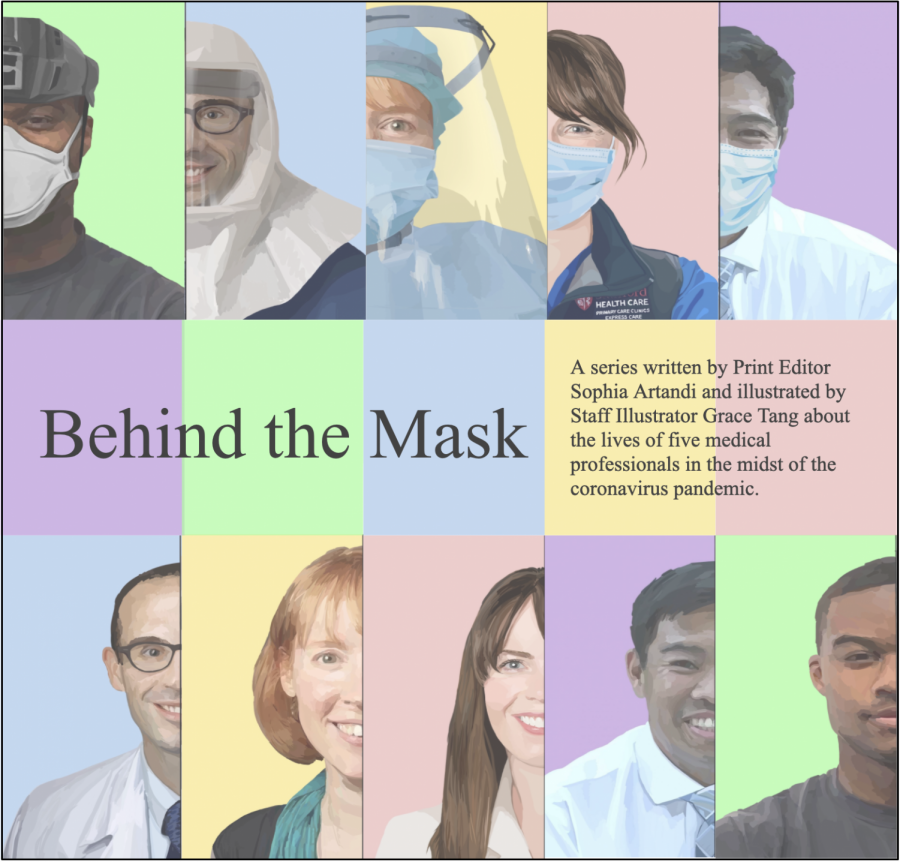Behind the Mask: Series Cover
Behind the Mask is a series written by Print Editor Sophia Artandi and illustrated by Staff Illustrator Grace Tang exploring the lives of five medical professionals and how their lives have changed as a result of the coronavirus.
———
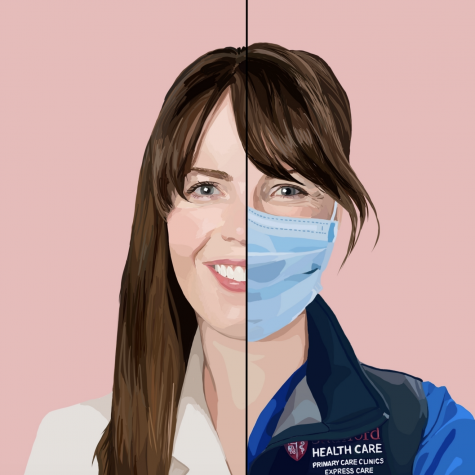
“Some [doctors] feel as if they have to decide who lives and who dies. It’s something we aren’t trained for and that prospect was keeping me up at night.”
Dr. Lucy Kalinithi describes the moral dilemma that medical workers often confront in dire situations like the coronavirus pandemic. In addition, she discusses the pandemic from the perspective of a primary care doctor and a mother, explaining how the coronavirus has forced her to adapt to certain lifestyle changes. Kalinithi also worries about the stress and shortage of equipment that medical workers around the world face during this health crisis. Read Behind the Mask: Dr. Lucy Kalanithi.
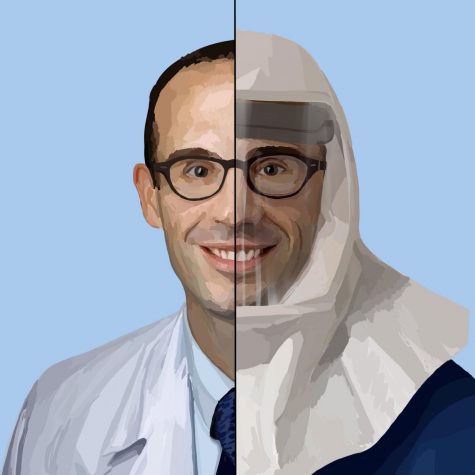
“I’m really proud of all the work we’ve done over the last five years because our team, by being ready and handling the first three weeks of the response, gave the rest of the hospital time to gear up.”
As a result of the coronavirus pandemic, Dr. Brian Thomas Garibaldi and his team were forced to open the Biocontainment Unit (BCU) at Johns Hopkins in February for the first time since 2015. Garibaldi reflects on how the pandemic has impacted his personal and professional life. Read Behind the Mask: Dr. Brian Thomas Garibaldi.
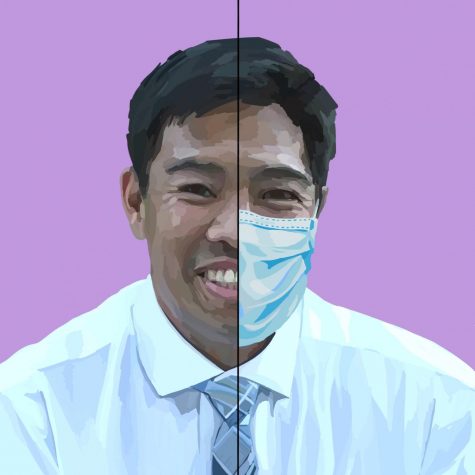
“Asking a whole population to stay home: that’s just unprecedented. […] This is probably once in a lifetime for us. I’ve never seen public health have to issue these [kinds] of restrictive borders.”
Dr. David Chang sees the pandemic as an extremely unique and complicated time both for doctors and for the public. “It’s like drinking from a firehose,” he said of the constantly-changing knowledge about the coronavirus. Much of his work is related to addressing health disparities in the community, and he expresses a hope that the pandemic will increase awareness around the need for proper funding in public health. Read Behind the Mask: Dr. David Chang.
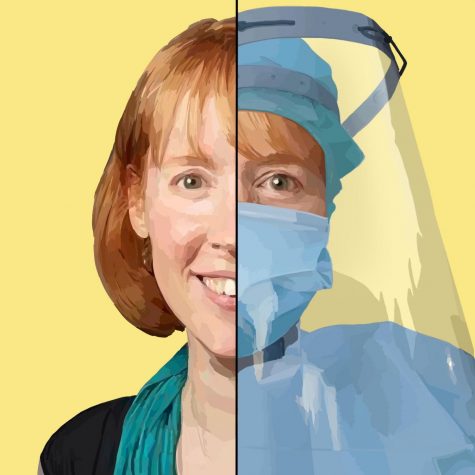
“We’re really fortunate at Stanford to have a lot of supplies. I think [Flushing] just didn’t have the resources to do everything it would have liked to have done in this scenario. That bothered me, and it’ll influence the decisions I make later on in health care.”
Nurse practitioner Kelly Sanderson spent two weeks during the beginning of the pandemic at the Flushing Medical Center, an underfunded hospital in New York City. She describes her experience there and the impact it had on her perspectives, as well as the stories of earlier struggle that her colleagues in Flushing told her. Read Behind the Mask: Kelly Sanderson.
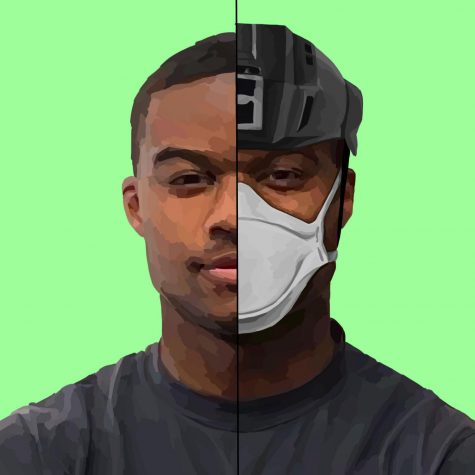
“When you sign up to be a firefighter, you take on the responsibility to protect life, property and the environment. If you’re not willing to do that, you shouldn’t pursue the job in the first place. There’s no difference between [the coronavirus] and walking into a burning building that could collapse.”
Charles Washington explains how his work with the Menlo Park Fire District has not slowed at all during the pandemic. Because of the coronavirus outbreak, he has to take more health precautions when he arrives at the scene as a first responder. Washington also discusses how his job as a healthcare provider involves not only medical support but also emotional support. Read Behind the Mask: Charles Washington.
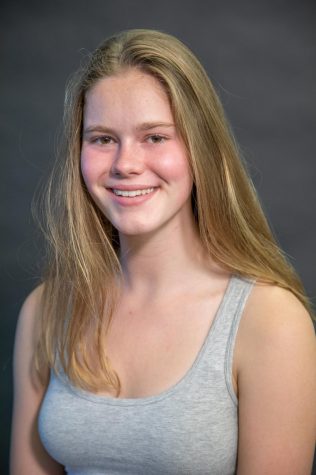
Fun fact: Sophia speaks German!
Interests outside of school: Soccer.
Favorite fictional character: Groot.
Grade: 11.
Email: sophia.artandi@menloschool.org

Fun fact: Grace went through all of middle school without watching TV or Netflix outside of school. She did (and still does) watch YouTube, though.
Interests outside of school: art, piano, math and video games with friends.
Favorite fictional character: The Mandalorian.
Grade: 11.


